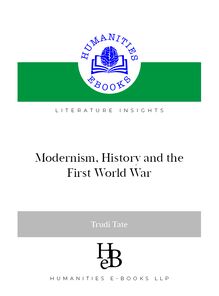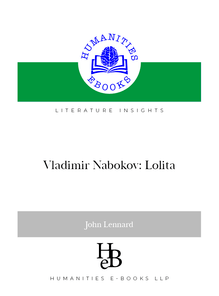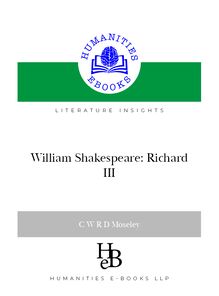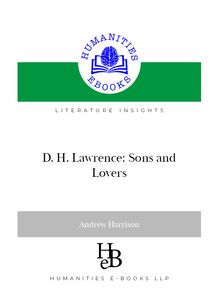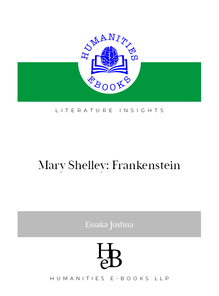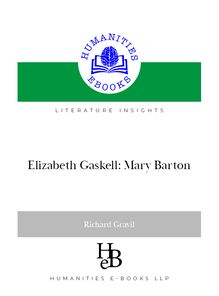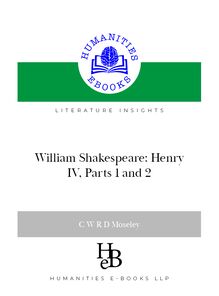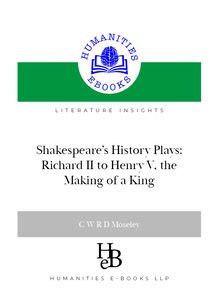-
 Univers
Univers
-
 Ebooks
Ebooks
-
 Livres audio
Livres audio
-
 Presse
Presse
-
 Podcasts
Podcasts
-
 BD
BD
-
 Documents
Documents
-
- Cours
- Révisions
- Ressources pédagogiques
- Sciences de l’éducation
- Manuels scolaires
- Langues
- Travaux de classe
- Annales de BEP
- Etudes supérieures
- Maternelle et primaire
- Fiches de lecture
- Orientation scolaire
- Méthodologie
- Corrigés de devoir
- Annales d’examens et concours
- Annales du bac
- Annales du brevet
- Rapports de stage
La lecture à portée de main
149 pages
English
Découvre YouScribe en t'inscrivant gratuitement
Je m'inscrisLaughing at the Darkness: Postmodernism and Optimism in American Humour , livre ebook
Découvre YouScribe en t'inscrivant gratuitement
Je m'inscris
Obtenez un accès à la bibliothèque pour le consulter en ligne
En savoir plus
En savoir plus
149 pages
English
Obtenez un accès à la bibliothèque pour le consulter en ligne
En savoir plus
En savoir plus

Description
Laughing at the Darkness Postmodernism and Optimism in American Humour Paul McDonald Paul McDonald Contemporary American Literature General Editors : Christopher Gair & Aliki Varvogli Using this Ebookt *This book is designed to be read in single page view, using the ‘fit page’ command. *To navigate through the contents use the hyperlinked ‘Bookmarks’ at the left of the screen. *To search, click the search symbol. *For ease of reading, use to enlarge the page to full screen, and return to normal view using . *Hyperlinks (if any) appear in Blue Underlined Text. Permissions Your purchase of this ebook licenses you to read this work on-screen. You may print a copy of the book for your own use but copy and paste functions are disabled. No part of this publication may be otherwise reproduced or transmitted or distributed without the prior written permission of both the copyright owner and the publisher. This work is copyright. Making or distributing copies of this book would constitute copyright infringement and would be liable to prosecution. Thank you for respecting the rights of the author. Laughing at the Darkness: Postmodernism and Optimism in AmericanHumour Paul McDonald HEBƁHumanities-Ebooks, LLP © Paul McDonald, 2010 he Author has asserted his right to be identified as the author of this Work in accordance with the Copyright, Designs and Patents Act 1988.
Sujets
Informations
| Publié par | Humanities eBooks |
| Date de parution | 11 janvier 2021 |
| Nombre de lectures | 0 |
| EAN13 | 9781847601872 |
| Langue | English |
| Poids de l'ouvrage | 1 Mo |
Informations légales : prix de location à la page 0,0448€. Cette information est donnée uniquement à titre indicatif conformément à la législation en vigueur.
Extrait
Laughingat the Darkness Postmodernism and Optimism in American Humour
Paul McDonald
Paul McDonald
Contemporary American Literature General Editors : Christopher Gair & Aliki Varvogli
Using this Ebookt
*This book is designed to be read in single page view, using the ‘fit page’ command. *To navigate through the contents use the hyperlinked ‘Bookmarks’ at the left of the screen. *To search, click the search symbol. *For ease of reading, use <CTRL+L> to enlarge the page to full screen, and return to normal view using < Esc >. *Hyperlinks (if any) appear in Blue Underlined Text.
Permissions
Your purchase of this ebook licenses you to read this work on-screen.
You may print a copy of the book for your own use but copy and paste functions are disabled.
No part of this publication may be otherwise reproduced or transmitted or distributed without the prior written permission of both the copyright owner and the publisher.
This work is copyright. Making or distributing copies of this book would constitute copyright infringement and would be liable to prosecution. Thank you for respecting the rights of the author.
Laughing at the Darkness: Postmodernism and Optimism in American Humour
Paul McDonald
HEB☼HumanitiesEbooks, LLP
© Paul McDonald, 2010
he Autor as asserted is rigt to be identified as te autor of tis Work in accordance wit te Copyrigt, Designs and Patents Act 1988.
First publised byHumanities-Ebooks, LLP, Tirril Hall, Tirril, Penrit CA10 2JE
Cover image © Paul Fleet, Fotolia.com
he Ebook (wit te facility of word and prase searc) is available toprivate purcasers exclusively from ttp://www.umanities-ebooks.co.uk and to libraries from MyiLibrary.com under an MiL’s own ISBN.
he paperback is available exclusively from ttp://www.troubador.co.uk
ISBN 978-1-84760-187-2Pdf Ebook ISBN 978-1-84760-188-9 Kindle Ebook ISBN 978-1-84760-189-6 Paperback
Contents
Series Preface
Introduction
CHAPTER ONE Postmodernism, Humour and Jewish American Ethnic Identity
CHAPTER TWO Humour and the Social Implications of Postmodernism
CHAPTER THREE Postmodernism, Humour and American Romanticism
Conclusion
Bibliography
1
6
2
25
64
90
129
134
Series Preface
The election of Barack Obama as 44th President of the United States in November 2008 represented both an historic and a sym-bolic moment in the history of the nation. Not only was Obama the first non-white President; he was also a figure whose origins lay at the edge of, and beyond, the geographical boundaries of the country. Born in Hawaii—the newest state and one far removed from con-tinental North America—Obama came from a region unfamiliar to most Americans, unless they had spent vacations there; the son of a Kenyan father and white American mother, he was a reminder of America’s origins as a nation of immigrants, but also an anomaly in a country where the overwhelming majority of African Americans are descendants of slaves. Moreover, Obama spent four years of his childhood in Jakarta, Indonesia, experiencing a life very different from the norms of the United States. In other ways, however, Obama’s biography enacts a familiar myth: the rise from a ‘broken’ home with an absent father, success in high school (interrupted by moments of crisis featuring alcohol and illicit drug use), through an education at Columbia and then Harvard Law School, to triumph in local Chicago politics and finally the Presidency epitomises the myth—if not the actuality—of the American Dream. While the road to the White House has been tougher for some than for others, with Abraham Lincoln and Bill Clinton possibly coming clos-est to being antecedents of Obama’s path, even the scions of wealthy, well connected families, such as George and George W. Bush, have always highlighted their populist roots in their political campaigns. Of course, Obama’s election by no means signifies the end of racism in America: jails remain disproportionately occupied by African American males, economic inequalities continue to be marked along ethnic lines and even as distinguished an African American as
Series Preface
7
Harvard professor Henry Louis Gates, Jr. has, in 2009, been a victim of arrest apparently based on racial profiling as he attempted to enter his own home. And yet, in the past thirty or forty years, there have been a series of pronounced shifts in academic approaches to racial, ethnic and gender issues, that have called attention to the multitu-dinous voices constituting what Walt Whitman famously called a ‘teeming nation of nations’. For present purposes, our focus will remain on the literature and literary criticism of the period running from, roughly, the early 1970s to the present. Until then, the literary canon had been con-structed around a body of white, largely male, New Yorkers and New Englanders, most notably the figures of F. O. Matthiessen’sAmerican Renaissance(1941) and Henry James (‘The Master’). In the Twentieth Century the scope widened to include mid-Westerners such as F. Scott Fitzgerald and Ernest Hemingway, and, post-World War Two, Jewish American novelists including Saul Bellow, E. L. Doctorow and Philip Roth, who were placed alongside perpetuators of a more ‘traditional’ American literature such as John Updike, and the new voices of what would eventually be labelled ‘postmodernism’, such as Thomas Pynchon and, slightly later, Don DiLillo. While there is no doubt that Nineteenth Century writers—most notably, Whitman, Herman Melville and Mark Twain—had recognised the multicultural possibilities of America, it is the era we are concerned with in this series that changed the way the country viewed and narrated itself in literature, with multicultural fictions that often combined critical and commercial success. Doctorow’sRagtime(1975) famously inter-weaves the stories of three families to rewrite the history and parody the mythology of the United States. The opening pages of the novel rapidly move from a turn-of-the-century world that seems straight out of Henry James or Edith Wharton to a sudden realization of the plurality of American life:
That was the style, that was the way people lived. Women were stouter then. They visited the fleet carrying white parasols. Everyone wore white in summer. Tennis racquets were hefty and the racquet faces elliptical. There was a lot of sexual fainting. There were no Negroes. There were no immigrants.
8
Christopher Gair & Aliki Varvogli
… In New York City the papers were full of the shooting of the famous architect Stanford White by Harry K. Thaw, eccentric scion of a coke and railroad fortune. Harry K. Thaw was the husband of Evelyn Nesbit, the celebrated beauty who had once been Stanford White’s mistress. The shooting took place in the roof garden of the Madison Square Garden on 26th Street, a spectacular block-long building of yellow brick and terra cotta that White himself had designed in the Sevillian style. It was the opening night of a revue entitledMamzelle Champagne, and as the chorus sang and danced the eccentric scion wearing on this summer night a straw boater and heavy black coat pulled out a pistol and shot the famous architect three times in the head. On the roof. There were screams. Evelyn fainted. She had been a well-known artist’s model at the age of fifteen. Her underclothes were white. Her husband habitually whipped her. She happened once to meet Emma Goldman, the revolutionary. Goldman lashed her with her tongue. Apparently therewereNegroes. Therewereimmigrants. E. L. Doctorow,Ragtime(1975)
Among the many strengths of Doctorow’s novel is its ability to high-light the way that an intermingling of disparate voices—immigrant, African American and ‘white’—is at the heart of American creativ-ity, whilst the book provides constant reminders both of the power of national mythologies such as Benjamin Franklin’s rags to riches narrative, and of just how hard it is to sustain principled opposition to this narrative in the face of the financial inducements and social opportunities offered to a few individuals. The transformation of the East European immigrant Tateh, defined by his socialism, devotion to his family and to apparently unshakable faith in core moral values into the Baron Ashkenazy, creator of movies depicting an implau-sibly harmonious (and immensely popular) multi-ethnic gang of American children finally reiterates Doctorow’s insistence that his-tory has always been told by the masters, but also his belief that—by 1975—there was the possibility of other histories emerging. At least within the academic community, Doctorow was probably
Series Preface
9
correct: while studies of Hawthorne, Melville and James most cer-tainly did not disappear, they were joined by a growing corpus of scholarship that insisted that yes, ‘therewere[or ‘African Negroes Americans’]. Therewereimmigrants.’Books such as Jane Tompkins’s Sensational Designs(1986), Michael J. Denning’sMechanic Accents(1987) and Russell J. Reising’sThe Unusable Pastassim- (1987) ilated and developed the work of earlier multicultural critics such as Annette Kolodny and Richard Slotkin to challenge the assertions underpinning the construction of the American canon and demand spaces for works by women novelists and the writings of African Americans and immigrants. And while theliteraryvalue of literature did at times seem to disappear from the interminable canon wars of the 1980s and 1990s (though not in the books cited above), the theo-retical battles that quite often really did split departments into highly antagonistic factions in the late-Twentieth Century do seem to have resulted in a Twenty-First Century critical culture in which a return to stress on the literariness of literature lives alongside the general embrace of the fact that writing the canon is not the preserve of Ivy League white males. At the same time as the work of critics such as Tompkins and Reising recovered the long-marginalised presence of writings by women and African Americans, new generations of American writ-ers from a plentitude of ethnic and class positions have assumed piv-otal places in contemporary American literature. While there seems to be no doubt that Toni Morrison is the best known—and one of the most highly acclaimed—of these voices, she is but one figure in a lit-erary marketplace that increasingly problematises the notion of what American literature is and the kinds of critical tools required to dis-cuss it in any meaningful fashion. The focus on the ‘playful’, experi-mental postmodernism of the 1960s and 1970s has been replaced by (or, at least, joined by) a return to the search for theauthenticexperi-ence of narratives of migration (both to and from the United States), of the precarious balancing of assimilation to a dominant culture and the desire to retain a culture of one’s own, and of the eternal ques-tioning of what it means to be an ‘American’. In an increasingly ‘glo-balised’ community, these narratives are now as often recounted by
10
Christopher Gair & Aliki Varvogli
writers from North Africa or China as by those from Eastern Europe, but most retain a faith—at some level—in the mythological prom-ises of the United States that seem to have been brought to life by Barack Obama. To listen to the taxi drivers of Boston, or Austin, or San Francisco, or Denver is to hear life stories—if not quitenovels— that are at once strikingly different in the details of war zones fled and disillusionment with the ‘old’ country, and an innate faith in the possibilities of a world still almost as new as that first viewed by Fitzgerald’s Dutch sailors at the end ofThe Great Gatsby (1925). And while contemporary American literature is as often marked by a disenchantment with the nation that can be traced through most of the nation’s literary history, this is accompanied by the sense of pos-sibility that is heard so often in the voices of ‘ordinary’ Americans, but also by the recognition that—post-9/11—the United States is as vulnerable to external forces as are the nations left behind. The enormous diversity of American literatures currently being created ensures that a series called ‘Approaches to Contemporary American Literature’ is bound to be both eclectic and inconsistent. There is no longer even the possibility—or the desire—to create a master narrative able to ‘contain’ (to return once more to Whitman) the multitudinous voices that constitute a ‘national’ narrative. Indeed, recent approaches to the Trans- or Post-national condition would rightly question the enduring legitimacy of such a concept. This means that the series makes no claims to unfurl organically, beneath any but the broadest of themes. Books studying the emergence and development of particular hyphenated American groups are accom-panied by those looking at genre, or at single authors. To study the world we live in requires tools and methodologies that may differ from those used to approach the texts of the past. What unites the books in this series is their contribution to our understanding of the here and now. Christopher Gair and Aliki Varvogli
-
 Univers
Univers
-
 Ebooks
Ebooks
-
 Livres audio
Livres audio
-
 Presse
Presse
-
 Podcasts
Podcasts
-
 BD
BD
-
 Documents
Documents
-
Jeunesse
-
Littérature
-
Ressources professionnelles
-
Santé et bien-être
-
Savoirs
-
Education
-
Loisirs et hobbies
-
Art, musique et cinéma
-
Actualité et débat de société
-
Jeunesse
-
Littérature
-
Ressources professionnelles
-
Santé et bien-être
-
Savoirs
-
Education
-
Loisirs et hobbies
-
Art, musique et cinéma
-
Actualité et débat de société
-
Actualités
-
Lifestyle
-
Presse jeunesse
-
Presse professionnelle
-
Pratique
-
Presse sportive
-
Presse internationale
-
Culture & Médias
-
Action et Aventures
-
Science-fiction et Fantasy
-
Société
-
Jeunesse
-
Littérature
-
Ressources professionnelles
-
Santé et bien-être
-
Savoirs
-
Education
-
Loisirs et hobbies
-
Art, musique et cinéma
-
Actualité et débat de société
- Cours
- Révisions
- Ressources pédagogiques
- Sciences de l’éducation
- Manuels scolaires
- Langues
- Travaux de classe
- Annales de BEP
- Etudes supérieures
- Maternelle et primaire
- Fiches de lecture
- Orientation scolaire
- Méthodologie
- Corrigés de devoir
- Annales d’examens et concours
- Annales du bac
- Annales du brevet
- Rapports de stage
Signaler un problème
YouScribe
Le catalogue
Le service
© 2010-2024 YouScribe
